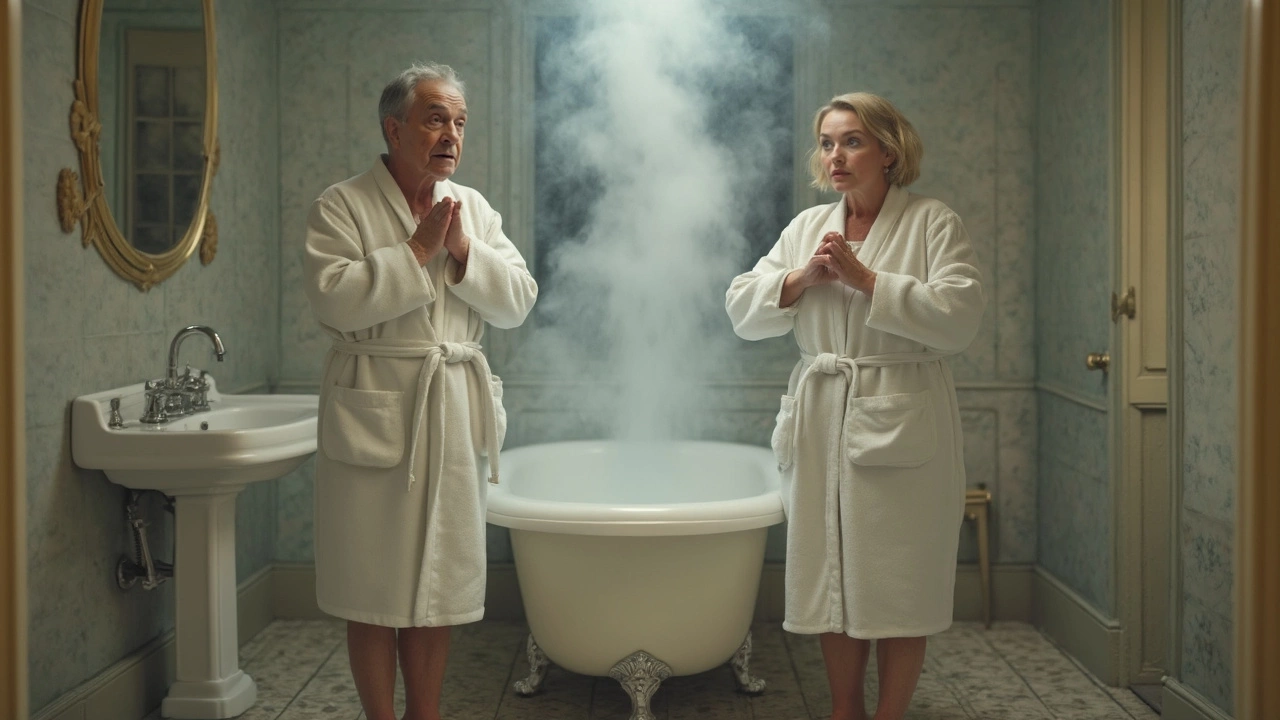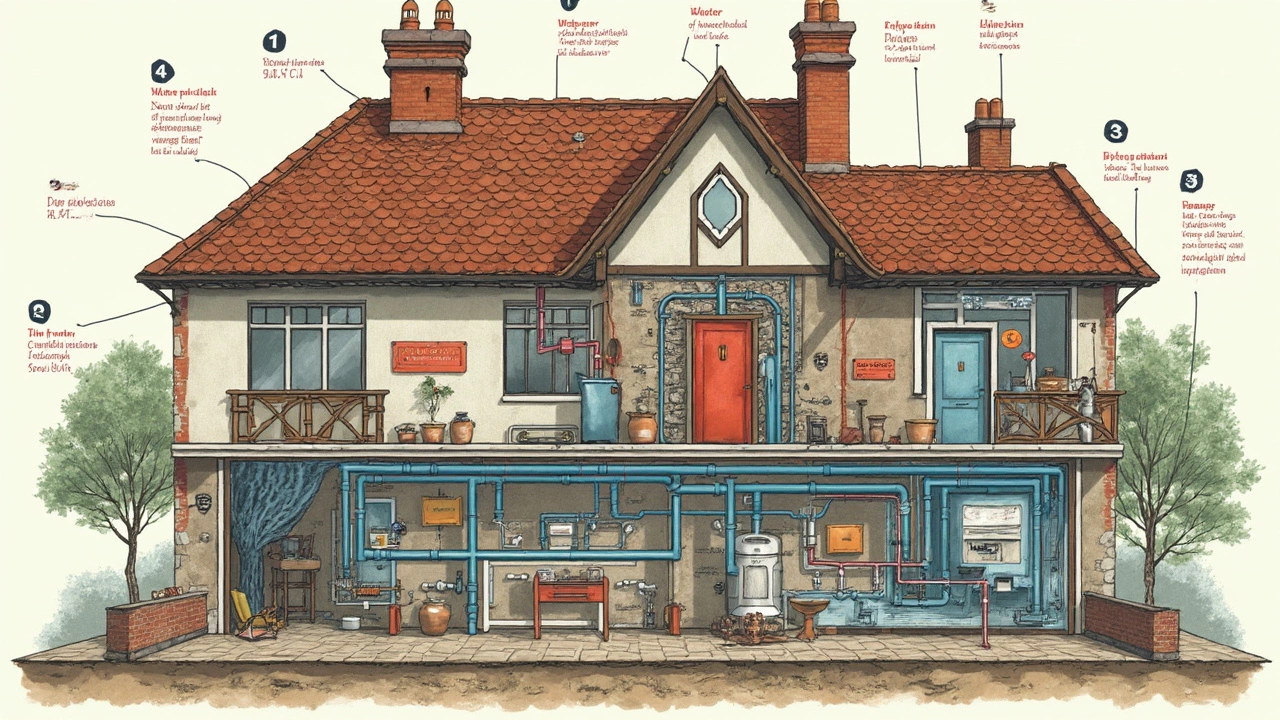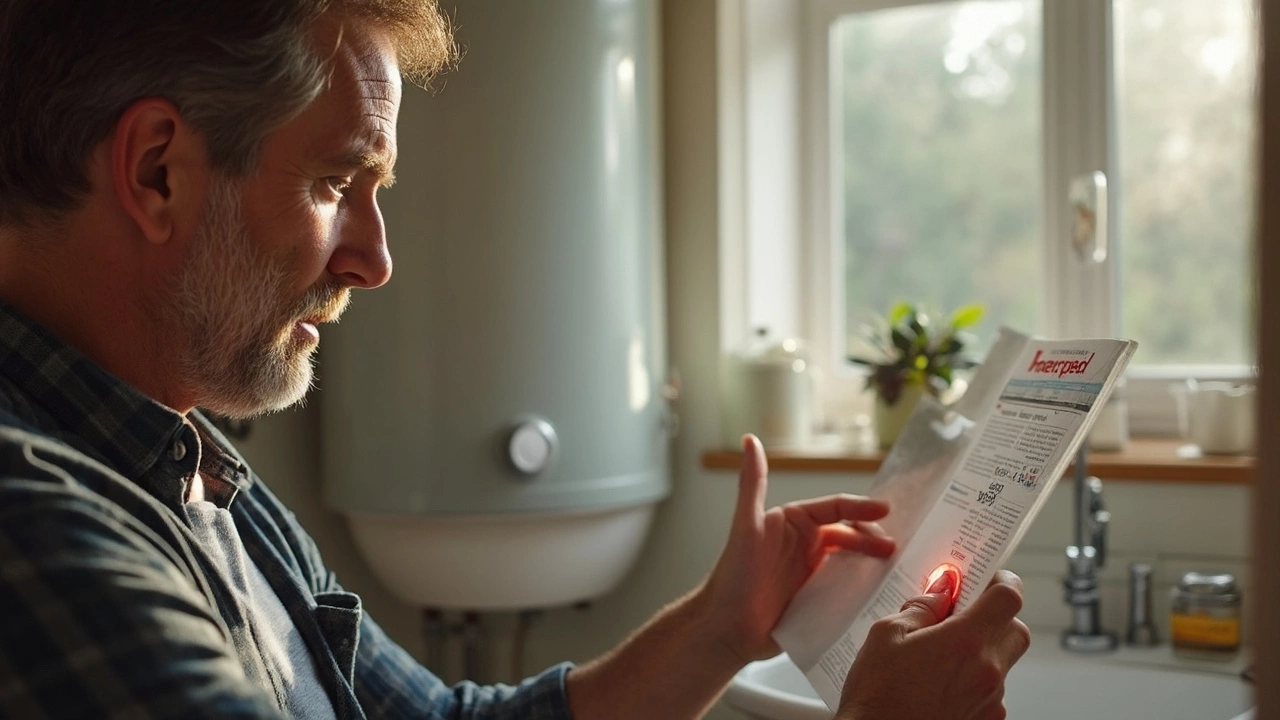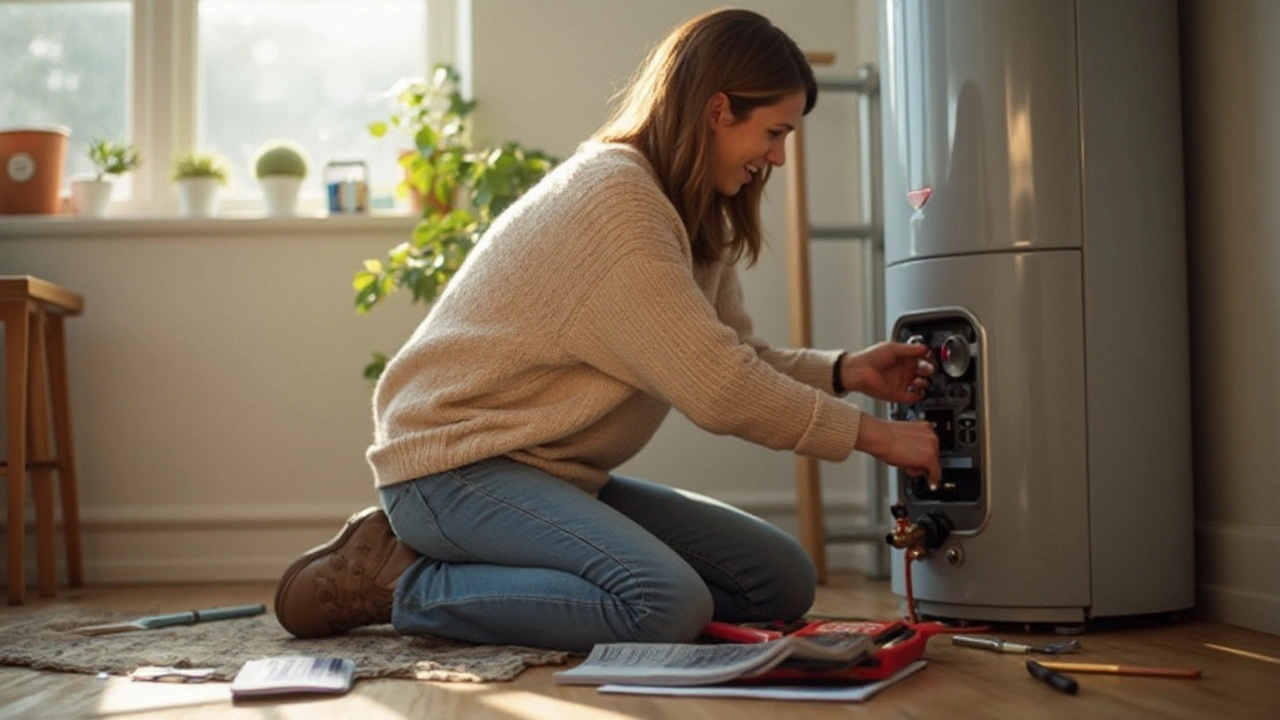
- 2 Mar 2025
- Gideon Thornton
- 0
Feeling that first icy splash when you expect a warm shower? Annoying, right? Let’s tackle the mystery of no hot water. The issue might be your water heater settings, or maybe something quirky with your plumbing. Start with checking the thermostat on your heater. It might sound trivial, but sometimes it’s just set too low.
Still chilly? Head next to your circuit breaker. A tripped switch can cut power to the heater. Flip it back, and fingers crossed, warm water is just around the corner. If that doesn't work, the issue might be a sneaky problem with the dip tube. This little guy controls how cold and hot water behave in your tank.
- Understanding the Problem
- Quick Fixes You Can Try
- When to Call a Professional
- Maintenance Tips for Your Water Heater
Understanding the Problem
So, the shower runs cold, and you're left with goosebumps. But what causes this cold water surprise? A few common culprits might be at play here. Let's break them down.
Water Heater Settings Check
Your water heater settings might be the first place you'd want to peek at. The thermostat could have been dialed down by mistake. Ideally, the thermostat is set between 120 to 140 degrees Fahrenheit for comfortable showers. Anything lower, and your hot water bliss might just turn a bit frosty.
Power Issues and Cicuit Breaker
Next, electrical glitches might have caused the heater to stop working. A tripped circuit breaker is an often overlooked but simple fix. Head to your breaker box and look for any switches that are off. Flip them back, and your hot water might just start flowing again.
Plumbing Problems
On to plumbing issues. Sometimes, the trouble lies within the dip tube. This nifty component directs cold water to the bottom of the tank, allowing hot water to rise. If it breaks or deteriorates, usually in older units, the water doesn't heat properly, leaving you rinsed in chill.
Gas Water Heater Specifics
If you've got a gas water heater, it might be worth checking the pilot light. When the pilot light goes out, the water heater can't heat the water. Relighting it is usually simple and might save the day. Just make sure to follow the instructions on your heater unit.
| Water Heater Type | Common Problem |
|---|---|
| Electric | Tripped Breaker |
| Gas | Pilot Light Out |
| Tankless | Demand Overload |
Understanding these potential issues is a step toward reclaiming your warm showers. Keep these points in mind, and you'll be better prepared to troubleshoot effectively.
Quick Fixes You Can Try
Sometimes, the solution to your lack of hot water can be simpler than you think. Let's dive into some quick checks and fixes you can try at home before calling in a pro.
Check the Thermostat Settings
Your water heater's thermostat might not be set at the ideal temperature. Warm it up by adjusting it to around 120 degrees Fahrenheit. But remember, too hot can be dangerous.
Inspect the Circuit Breaker
We often forget about the circuit breaker. A tripped breaker can cut power to your heater, leaving you with cold water. Take a quick trip to your breaker box and make sure everything is as it should be. Reset it if necessary.
Look at the Pilot Light
If you have a gas water heater, a blown-out pilot light could be the culprit. A simple relight could bring the heat back. But, be cautious—if it doesn't stay lit, there could be a bigger issue.
Examine the Dip Tube
"Issues with the dip tube are a common, yet overlooked, reason for a sudden lack of warm water," says plumbing expert, Alex Smith. "It's a quick fix, but often requires a professional eye."
Sometimes, a cracked or broken dip tube can lead to cold water pouring directly out of the tap. Not something you want? Replacing it may fix the problem.
Check for Leaks
Leaks in your system can lead to a decline in hot water supply. Look around your water heater and pipes for any drips or puddles.
| Step | Description |
|---|---|
| 1 | Adjust thermostat to 120°F |
| 2 | Check circuit breaker and reset if necessary |
| 3 | Relight pilot light on gas heaters |
| 4 | Inspect dip tube for damage |
| 5 | Check for leaks around the heater |
By trying these tips, you might just save yourself from a frosty shower and have your shower feeling like a warm oasis again!

When to Call a Professional
Alright, so you've tried the DIY fixes, but your hot water issue still persists. Sometimes, it's time to bring in the pros. How do you know when? Let’s dig into it.
Persistent Problems
If you've exhausted the basic steps and the shower remains cold, the problem might be more serious. Internal components like heating elements or the thermostat could be faulty, and these aren’t typically DIY jobs. A professional technician will diagnose these issues accurately.
Water Heater Age
Is your water heater over a decade old? Old units can develop issues that require expert intervention (or sometimes replacement). Older models are less efficient and may be more prone to failure.
Strange Sounds or Leaks
Hear any rumbling sounds or notice leaks around the unit? Strange noises might signal sediment build-up, while leaks can indicate a bigger issue. In either case, these problems call for professional repair to prevent further damage.
Sediment Build-Up
Let’s talk about sediment. Hard water often leads to mineral build-up in your tank, affecting efficiency. A technician can flush and clean the tank to improve its performance. Here's a common sediment problem and a potential solution:
| Issue | Solution |
|---|---|
| Sediment reducing efficiency | Tank flushing by a pro |
Safety Concerns
Working with gas water heaters can be dangerous if you’re not trained. Gas leaks or combustion issues are serious risks. If your unit uses gas, calling a pro is the safest route.
Remember, experts not only fix the immediate problem but also help improve the overall function and lifespan of your water heater. Spending a bit upfront on professional help can save you a lot of trouble down the road.
Maintenance Tips for Your Water Heater
Keeping your water heater in good shape can save you heaps of trouble down the line. Regular maintenance doesn't just protect your investment, it also keeps the hot water flowing without a hitch. Here are some down-to-earth tips for keeping your water heater in tip-top condition.
Flush the Tank Annually
Over time, sediments get comfy at the bottom of the tank. Not great for the heater's efficiency. Once a year, drain a few gallons from the tank to clear out that gunk. Before you start, make sure the heater is off and the water is cool. Trust me, you don't want boiling water on your toes!
Check the Pressure Relief Valve
This little gadget is a big deal. It's there to make sure your water heater doesn't blow its lid—literally. Every year, lift the lever to let some water out. If it’s not flowing smoothly, it might be time for a replacement.
Inspect Anode Rod
The anode rod is your tank's best friend, preventing rust from taking over. Check it every three years. If it’s looking gnarly—like rusted or less than half an inch thick—it’s time for a new one. A little time here could mean years saved from needing a new water heater.
"Regular maintenance is crucial. It extends the life of the water heater and prevents untimely breakdowns," says John Doe, a seasoned expert with over two decades in plumbing.
Set the Right Temperature
Setting your heater thermostat at about 120 degrees Fahrenheit is best for both safety and energy savings. Too high, and you risk burns. Too low, and bacteria might get comfy in your tank. A little tweak here can mean peace of mind for you and yours.
Professional Inspections
Getting a professional to inspect your water heater once in a while isn’t a bad idea, either. They can spot potential issues before they turn into costly repairs. Plus, it never hurts to have a pro reassure you that everything’s in working order.
A little love and care can make a big difference. It’s all about preventing problems before they happen. Plus, who doesn’t like the idea of avoiding icy showers?




